Keeping a Potted Tree
I'd like to add an ornamental tree to my back patio. Since my patio is mostly brick paved, I would need to keep the tree in a large planter.
I want to get a Lavender Twist, aka Weeping Redbud, which doesn't get much taller than 10 ft. How large of a planter should I get? I was thinking a 10 gallon (roughly 18"x18"?), would that be big enough to allow the tree to grow larger than 5 ft? Also, with our winters, would keeping the tree outside in a planter (above ground) be a bad idea?
Thanks for any help!
Comments (19)
rjj1
15 years agolast modified: 9 years agoI don't know what the rootstock would be on this plant, but in my opinion it would be a safe guess it's a poor choice for a container. Redbuds (like pecans) are notorious deep tap growers. As soon as the tap hits the bottom of the pot, growth will be stunted and the plant will stress to the point of decline.
Temperate and tropical trees and shrubs have been grown in containers for at least a thousand years, but probably longer. For best results the pot needs to meet the requirements of the tree throughout the process. Never oversized, which can cause root and tree loss from overwatering or the soil staying too wet, or never too small which would be difficult to care for with our extreme summer temperatures without constant care and dedication.
My temperate plants are moved close to the east side of my house where it is warm and out of sun and wind for most of the day.
randy
Related Discussions
overwintering potted fruit trees
Q
Comments (4)SoBrown0 I grow pluots, peaches, and Japanese plums in containers here in Wisconsin. We usually see between -10 and -20F every winter. My garage is unheated and only the walls are insulated (its attached)... My containers freeze solid in there...they feel like frozen ice cubes when i move them around in the winter (which i try not to do, because plastic is so brittle)... I imagine my trees have been around 0F or maybe colder... No issues whatsoever... Once a tree becomes dormant and stays roughly the same temp and doesn't get hit with any sun (to warm the tree), they stay very very dormant... I bring them out when the threat of cold is done....See MoreCan ANY tree be kept in a pot so long as you keep roots trimmed?
Q
Comments (6)A 24 inch container isn't large enough to grow a fully productive black cherry, but (as Resin mentioned) you could certainly keep it root and top pruned and enjoy it for many years. I'd not suggest that you need to comply to some of the rigors of true bonsai, but careful root pruning and re-potting will be absolutely essential to the survival of your tree. May I suggest something a bit smaller for you? Many people enjoy growing blueberries in containers. You'd likely have enough berries for you AND the birds. Butterflies love the flowers, too. Again, you would need to root prune and re-pot occasionally, but you'd be able to grow a nice sized blueberry plant in a 24 inch container....See MoreHow many years can i keep my peach trees in 21x16 inch pots?
Q
Comments (3)How long have they been in them?It's really your choice,but leaving them in the pots will dwarf them more and they will need to be root pruned if they are left there.I think a year should be okay,without doing any moving. Brady...See MorePotted JM. Help. *pics*
Q
Comments (9)It is very easy for JM's in containers to dry out rapidly and that's what looks like happened. As long as not left too long in this condition, they will typically releaf. If you are positive it didn't dry out, then the issue is a bit more serious. Overwatering to the point of wilting generally means you have compromised the root system and if that happens, the plant does not recover easily, if at all. FWIW, it's a lot harder to overwater a containerized plant if in a good, fast draining soil and with adequate pot drainage than one planted in the ground. I often water my containerized JM's daily if the weather dictates. btw, when discussing containerized JM's, I would not consider that too large a tree for that size container.......in fact, it is pretty typical. And I do not necessarily wait to repot if my intent is to continue to grow this as a containerized tree. However, that current soil media looks nicely textural and adequately barky so waiting should be fine. I really believe this to be a watering issue............See Moreappledeco
Original Author15 years agolast modified: 9 years agoThanks for all the information. I thought I had done my research, but apparently not.
Unfortunately, my patio faces south and has no decent shade whatsoever. In this case, is there a type of tree you would recommend, or should I abandon the idea all together?
OklaMoni
15 years agolast modified: 9 years agoDo you really want a tree? How about planting some castor beans? Awesome plant in the summer, takes the heat, and no worries about over wintering, as it dies when it gets cold. :)
This was taken a couple of years ago, where I lived then.
Monicelaena
15 years agolast modified: 9 years agoThe "beans" or seeds of the castor bean plant, Ricinus communis, are deathly poisonous if chewed or eaten by animals or children. Unfortunately, they are usually brightly colored and attractive to children.
Okiedawn OK Zone 7
15 years agolast modified: 9 years agoAppledeco,
I think you did your research, but you just took your research to a higher level by consulting with experienced gardeners here on this forum, and that gave you a different perspective on your original choice of a weeping redbud. That's not a bad thing.
I like Moni's suggestion of Castor Beans, if you will not have small children or animals around. As Celaena points out, Castor Bean plants product flowers that eventually give you Castor Beans which contain a very deadly poison called 'ricin'. You can have the plants safely, though, if you cut off the flower seedheads as soon as the flower is through blooming and before the beans can mature. Be sure to dispose of it properly. I usually put them in a Wal-mart bag, tie it shut, and put that inside a black trash bag, so no one will find and eat 'the beans'.
If grown in good soil and given good moisture, the Castor Beans get very large very quickly. With a lot of water and fertilizer, I've had them get 10'to 12' tall in no time at all. There are castor bean plants with green leaves and also with the reddish leaves as shown in Moni's photo. I love them in combination with cannas and four o'clocks as they give a very tropical look, which might be nice on/near the patio. They are annuals and have to replanted every year.
There are lots of other options as well. If you want a tropical look, you also could use a Banana tree or a cold-hardy palm. Although your location might be at the outermost limits for a cold-hardy palm, there is a very cold hardy banana that is cold hardy down to zone 3. It is Musa basjoo.
There are many other tropical plants you could use and they are quite affordable in 5 or 7 gallon pots in the garden centers at big box home improvement stores in the spring. All of them, though, ARE tropical and would have to be carried inside to overwinter.
For a south-facing patio, I'd probably go with a crape myrtle myself. There are dozens of named varieties, and you could choose one that reaches a mature height that is manageable in a container. The only problem I've ever had with crape myrtles is that they sometimes get aphids but that is not an insurmountable problem.
If you are trying to shade the patio, you might want to go with 3 plants in separate containers. That would give you quicker shade than 1 plant. You also could use a larger planter like a whiskey barrel (I like the 'fake' rubber or plastic ones better than the wood ones because they don't rot and they don't smell like whiskey) and grow a vine on a trellis for very quick shade. Morning glories or moonvine flowers, if planted from seed in late April, would be nice and tall by late June to early July.
There are other trees that would work, among them Dwarf citrus like lime, satsuma orange or lemon, but they'd need to overwinter indoors. NOTHING smells better than a lemon tree in bloom!
If you want an evergreen, let me know if you want one that is a broadleaf evergreen or a conifer, and I'll try to come up with some specific suggestions.
Without seeing your patio, it is hard to guess what would work best. Can you set the planter BESIDE the patio to give you shade without taking up too much patio space, or is your space very limited?
If your patio had any shade, I'll suggest Japanese Maple because they are so very lovely and do quite well in containers, but they would not do well in full sun on the south side of a house.
Some shrubs, especially some of those in the holly family, can be pruned up into a tree form and are relatively fast-growing. They might be easier to grow in containers than most trees, which are going to want to get bigger than you want, even in a container.
If you want something with foliage that is different, you might go with a tree that has reddish to purplish foliage, like a purpleleaf plum, purple sand cherry, ninebark or smoke tree.
If you want something that blooms and spreads out into a rather wide/broad screen, all you need is one chaste tree (Vitex agnus-castus). It is very fast-growing, will quickly get 12' wide and 12' tall and has lovely blue flowers that butterflies love. I think it would be too large for anything smaller than a whisky barrel. Another nice thing about chaste tree is that it tolerates heavy pruning to keep its' growth in bounds. Due to its size, it would do best if placed 4' to 5' south of the patio so it could shade the patio without actually filling up the entire patio though. IF you could place it where it would shade your patio without encroaching on it, it would be a perfect plant to have beside a patio.
So, you see, there's lots and lots of options. We can discuss this more if you want to describe how much space you have, whether you want a screen to provide privacy, a taller canopied tree for shade, both, or whatever.
I'm really wondering what Randy would recommend because he has vast experience with container grown plants.
Dawn
appledeco
Original Author15 years agolast modified: 9 years agoDawn, where have you been all my life? :)
Let me see if I can post some pictures of my patio.
I live in a townhome that has a private fenced-in patio attached. It is about 20'x20' and mostly brick paved, aside from a few planters on the perimeter.When I walk out the back door onto the patio, I am facing south. This is a couple of the planters looking southwest.
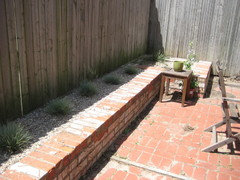
I currently have Elijah Blue Fescue planted in the long planter (I hope to bunch these up in the spring and compliment them with Pink Muhley Grass). In the planter at the furthest corner, I have a Yucca and iceplant.This is the opposite corner, facing southeast.
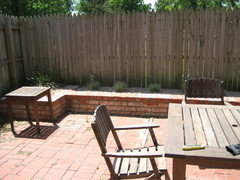
Again, Yucca and iceplant are in the furthest planter.This is the northwest corner.
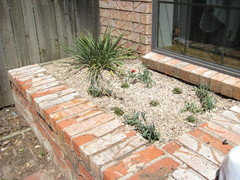
Again, Yucca and iceplant. I wish I had a more recent picture as the Yucca has grown 3x larger and the iceplant has filled the planter.Here are some wider shots. These were taken before weeds were pulled and yucca was planted earlier this year.
Northwest:
Southwest:
Southeast:
(The Northeast side has the AC unit, nothing pretty to see there)You probably can't tell, but on the east and west sides, against the fence, are some beds at ground level. I recently planted 5 (Bare-root) Hostas in each. I also plan to buy some planters that can be attached to the top of the fence in the spring. I'll hang them only across the south fence and want to plant Sweet Potato Vine, Purple Heart, and maybe some Lavender in them)
As far as trees/shrubs, I'd prefer something I wouldn't have to take in doors, since we have very little room. I'd prefer not to have something poisonous. I don't know why. I have no children and indoor only cats. Obviously, I prefer the tropical look. I also have a Euphorbia that is currently indoors.
I hope this has clarified some things. Let me know if you have any more questions. Thank you SO much for all your help thus far.
Okiedawn OK Zone 7
15 years agolast modified: 9 years agoAppledeco,
Well, for the last 9 years of your life, I've been right here in southcentral Oklahoma, trying to turn a former farm/cow pasture into a landscape and, in particular, doing my best to remove/kill bermuda grass (bermuda grass is evil!) and replace it with plants I'd rather have. (laughing) And, before that I was in Texas, trying to remove all the evil bermuda grass on our property and replace it with plants I'd rather grow. Do you see a common theme there?
Thanks for posting the terrific photos and discussing what you have in the planters. Oh, we can have so-o-o-o much fun today discussing what you could do to add shade to your courtyard!
However, as you can guess by looking at the time of this post, it is too early in the morning for my brain to be fully engaged and wide awake, and I don't even have any caffeine in me yet. I promise to come back to this thread later in the day and add a list of suggested trees. It actually would be pretty easy to get a tropical look using some cold-hardy plants.
I'm a little concerned about the hostas you just planted. Hostas need a LOT of shade in our climate.....not that I can grow them in MY shade because here, in the Oklahoma outback, we call hostas "deer chow". Are your hostas in a spot where they will be shaded by the fence or house or something else for most of the day, or do we need to figure out how to shade them?
Dawn
rjj1
15 years agolast modified: 9 years agoHave you measured air temperature during the summer in this location? It looks like it would be very hot with the sun reflecting off all the brick, glass, and fence. Bet it hits 110+ mid day. Drought and heat tolerant plants are a good idea.
I would be temped to break up a lot of the sun with some form of wood structure.
randy
appledeco
Original Author15 years agolast modified: 9 years agoDawn,
The Hostas would get shade for some parts of the day because of the fence. I couldn't tell you exactly for how long. My original idea for the tree(s) was to shade the Hostas.By the way, I really like the Musa basjoo from your earlier post. I suppose this is something I'd have to water quite frequently, but could I get away with having 4 pots of them? Two on each side of the courtyard to shade the Hostas?
Randy,
I haven't measured the temp. I never thought of it. Originally I was going for a sort of xeriscape with plants that needed very little water and lots of sun, but my attraction to other types of plants ruined it for me.I'm not sure about doing some form of a wood structure. I assume this may cost more money that what I'm willing to put in.
Okiedawn OK Zone 7
15 years agolast modified: 9 years agoAppledeco,
I hope the Hostas get a lot more shade than I think they will, but I am sure you can arrange containerized plants nearby to make shade for them. In the case of the hostas, it isn't just the sunlight that will scorch them though. As Randy so ably pointed out, heat and reflected light are going to be a major issue for plants in this courtyard setting, and that would include the hostas. Hostas really are more of a woodland plant, thriving in rich, humus-rich, moist soil under the canopy of shade trees. They do fine in Oklahoma heat in those conditions, but I am a little worried they may not be able to handle the conditions in a brick-paved courtyard.
A wooden structure to create shade doesn't doesn't have to be terribly expensive. You could make a simple pergola. Our first year here, we needed a 'quick fix' to shade the back of the house, which faced west. Having spent so much money buying the land and then clearing it, fencing it (14 acres takes a lot of fencing), putting in electric, water and a septic system, and THEN building the house, our budget for exterior projects was just about $0 that first spring.
We errected a simple pergola to shade the deck, using cedar posts and lumber cross beams. I think we had 8 upright posts set in concrete in the ground and then used two-by-fours to make a frame that connected them across the top. For instant shade, we bought shadecloth and stapled it across the top of that wood frame, and then I planted morning glories at the base of each post. That simple pergola/shade cloth combination, along with the morning glories, shaded the 16' x 8' back deck (and the back part of the house) for 2 years until we had the time and funds to replace it with a large, screened-in back porch. Whatever we spent on the lumber and shade cloth was quickly repaid in electric bill savings since we were blocking a major portion of the the bottom story of the house from the sunlight all summer long. Just some food for thought. If you own the house, anything you do to shade the courtyard would be a great investment. Of course, if you are renting the house, it would be harder to justify spending money on such a structure.
One other thing to consider is the paving used in the courtyard. Sunlight and heat will radiate up from that in great amounts. The more plants you have in containers, the more greenery you can add to break up that big hot expanse of masonry.
You could go several directions with the type of plantings you choose, so in order to come up with some good suggestions, I'm going to get out my notepad and pen and make some lists of plants that would fit different 'themes'. I'll be back to post the lists in a little while.
Dawn
appledeco
Original Author15 years agolast modified: 9 years agoDawn,
You're probably justified in your concerns about shade for the Hostas, I certainly am. If they don't survive, I'm only out $30, so it's not such a big deal.
I love the idea of a pergola, but really, if it's any more than $200, I wouldn't be interested. I DO own the townhome, but intend to sell in a few years. Also, we're not in an area that would justify spending that sort of money on improvements. The only improvements I'm making are for my own enjoyment.
I'm looking forward to your list. Filling the courtyard with container plants would be my ideal solution.
Okiedawn OK Zone 7
15 years agolast modified: 9 years agoOK, first, I do like the planters. I also think there are ways to plant some things inside the planters that would help get rid of (by hiding it) that hot, brown fence.
So, for the first option, I am going to pretend that your backyard and patio are MY backyard and patio, and I am going to tell you what I would do. Now, obviously, your tastes and my tastes may not be alike at all, and you may hate all my suggestions. And that is fine, but at least maybe something I say will strike a chord with you and give you something to try.
THE TROPICAL PATIO: I do like the blue fescus grass, yucca and the ice plants and would try to keep them and just add plantings around and near them, even if I had to dig them up and shift them around a little bit.
FOR CONTAINERS: I'd get four large containers and plant one cold-hardy banana, Musa Basjoo, in each of them. Since some of the courtyard corners already have planters in them, I wouldn't put one container in each corner. Instead I'd probably put one at the mid-point of each courtyard wall (including the back wall of the house) if I wanted a formal look. If I wanted a less formal look, I'd group them closer together wherever I wanted shade the most during the hours I'd be out on the patio. Once the banana tree was planted and watered in, I'd come back and add ornamental sweet potatoes and purple hearts at the base of plants, probably putting one ornamental sweet potato and one or two purple heart plant in each. These will be decorative, of course, but also will help shade the soil and and container, especially as the ornamental sweet potato grows enough to cascade over the edges of the container. I ALWAYS have underplantings in my tropical containers and they make the containers look more 'planned' and integrated into the whole design. If you think 4 bananas would be too much, you could go with 2 bananas and 2 of something else.....maybe 2 cold-hardy windmill palms, or 1 windmill palm and 1 Texas Star Hibiscus or some other hardy hibiscus. By having your ornamental sweet potatoes in the containers instead of growing on the fence, you'll have happier plants, because they won't be exposed to as much sunlight and reflected heat in the planters as they would be if grown in planters on the fence.
In the long planters that have blue fescue grass and which will have pink Muhly grass added next spring, I'd HAVE to plant a vine to grow up that fence and shade it. I just cannot emphasize enough how much cooler it would be to temperature-wise to cover the fence with something green. My choice probably would be an annual vine for the first year or two so I could be sure the vine, muhly grass and fescue can peacefully coexist. I'd probably plant a combination of morning glories and moonflower vines from seed. They grow quickly, have lovely, lush, tropical-looking foliage and you'd have morning glories in the morning and moonflowers at night, although you probably won't have blooms until midsummer. The moonvines, by the way, have a deliciously lovely fragrance, which is a bonus if you sit outside at night. If you wanted something with purple flowers, you could plant hyacinth bean vine which have lovely wiseria-like flowes. If you wanted something with flowers in a hotter shade of color, you could plant black-eyed susan vine with its orangey-yellow flowers or mina lobata. Later on, if you wanted a cold-hardy perennial vine, you could plant 'Madam Galens' trumpet creeper or American Crossvine.
In the Northwest bed along the back of the house (3rd photo from top above) that has the yucca and ice plants, I'd add a crape myrtle. It would shade that window from sunlight/heat during the hot months and the flowers would add to the tropical look. The flowers would add to the tropical theme, and the leaves, which are pretty small, would be easy to clean up in the fall. Crape myrtles grow fast, and their trunks would add winter interest to the garden.
In the ground level beds that currently have hosts, I'd dig up the hostas, and plant a row of tall canna lilies. They'd get 5' to 6' tall or taller and would provide a cool green screen of tropical-looking (but cold-hardy) plants in front of the fence. I'd replant the hostas in front of the cannas if I could strateically place containers nearby to shade them. I might even put the hostas in containers so I could move them to the shadiest part of the patio. (I have real concerns about the survival of hostas on a hot south-facing patio.) If I planted the hostas in front of the cannas, I might not add something else there. Or, if the hostas go into containers or into a shadier spot, I'd plant reblooming daylilies in front of the cannas OR some kind of shorter annual flower like portulaca, purslane or gomphrena.
I might put either another canna or two or a pink muhly grass or a Texas Red Star hibiscus near the AC unit, but not so close that it would impede the very important air flow.
Then, after all that was done, I'd have to add a couple of potted plants that I could move around as needed to fill any gaps. You might use those pots for annuals so you have a little planting space to 'play with' each season: zinnias, angelonias, begonias or sun coleus or other sun
lovers in summer, mums in the fall, pansies or snapdragons or petunias in the spring.That's what I'd do for a topical look, and I am sure there are lots of other plants you could add, as needed to get a tropical look, including: Mexican Petunia (ruellia), lantana (a half-hardy perennial), rainlilies (zephyranthes, Gold Star (Esparanza/Tecoma Stans), etc.
If I had room somewhat for some sort, compact shrubs, I'd probably go with one of the dwarf nandinas.
Along the back wall of the house, if there is soil and not bricks, I'd be tempted to plant a row of cast iron plant with liriope in front of it.
And, if you don't like the look of crape myrtles, you could substitute a desert willow, which is neither a desert plant nor a willow. Desert Willow (Chilopsis linearis) is related to trumpet creeper vine, is relatively fast-growing, very heat and drought-tolerant and has lovely flowers, usually in pale lilac, although white-flowered and burgundy-flowered ones are available.
That's it for the tropical look. I'll be back in a while with suggestions for a different look or two. Time for lunch....and, in case you think I'm trying to make you spend a lot of money, we have a plant swap coming up this spring and you probably could pick up at least some of these plants there.
Dawn
Okiedawn OK Zone 7
15 years agolast modified: 9 years agoFor more of a xeriscape, I'd still use a tree in 4 containers, but more for the look of it than for shade, because xeriscape-type trees would have smaller leaves and wouldnt't give as much shade.
In you were zone 8, you could have olive trees, lime trees, lemon trees or sweet bay in pots, but since you're in zone 7, we'd have to go with trees that are cold-hardier. So, some possibilities for trees in containers might be:
Desert Willow: (It wouldn't get as tall in a container as it would in the ground, but that would be OK. The container might need to be wrapped in insulation or a sleeping bag or something if very cold weather threatened.)
Silverleaf Mountain Mahogay (Cercocarpus montanus): Small leaves that are dark green on top an a silvery green underneath. Gets 8 to 15 feet tall in the ground but probably not quite as tall in a container. Hard to find except at native plant nurseries or native plant sales.
Possumhaw Holly (Ilex decidua) Very versatile and drought-tolerant once established. Deciduous. If it gets about 6 hours of sun, you'll have red to reddish-orange berries from fall through late winter to early spring. (Trees are male OR female, so you'd need both to have berries.) Very small leaves and lovely grayish bark. There is a tendency to sucker and be shrubby, which you can correct with pruning.
Yaupon Holly (Ilex vomitoria). Very similar to possumhaw holly, but evergreen. A weeping version is available. Drought tolerant.
Southern Wax Myrtle: (Myrica cerifera) Usually gets 6' to 12' tall or taller, but can attain a much larger height (in the ground) after quite a few years. Evergreen. Cold hardy. Drought tolerant. Live-olive leaves that are larger than those on the hollies mentioned above. TINY pale blue berries. Tendency towards being shrubby, but can be pruned up to form a graceful small tree. Would provide more shade that the hollies or desert willow.
Mexican Buckeye (Ungnadia speciosa) Usually about 8' to 12' tall but probably smaller in pots. Has light green leaves that turn a lovely golden yellow in the fall. Light pink flowers in early spring followed by the buckeye fruit/seed thing. Isn't really a buckeye, but was given the name because its seed pods resemble those of true buckeyes. Supposed to be cold hardy as far north as El Paso, so ought to survive in pots here. Generally only found at native nurseries or plant sales held by native plant societies.
You also could use native plants that function in a woodland area (or on the edges of one) as either a tall shrub or shortish shrubby tree, like Rusty Blackhaw Viburnum, Chaste Tree (Vitex Agnus-Castus), Roughleaf Dogwood (a native dogwood, not at all the same as the dogwoods grown for the spring flowers), or Mexican Plum.
Or you could use conifers, most of which are very drought-tolerant once established. These would include: Ashe juniper (Juniperus ashei), Arizona Cypress (tall in the ground but would stay smaller in a container), or just about any other upright juniper. I think pines or spruces would get too big and need too much water to be happy in a container on a hot patio.
For the planter boxes, you are on the right track with your ice plants, Elijah Blue fescue grass, and Pink Muhly Grass. You could add other grasses, even in containers, or in the planters or in their own containers. These could include:
Japanese Maiden Grass--available in many named varieties, including 'Strictus' which gets 4' tall and wide with blooms another foot above that. 'Strictus' has wide green leaves with yellow bands. Another one is 'Morning Light' which is about 3' x 3' with flowers a foot taller. It has white/green striped leaves that look silvery-gray from a distance. The most common one is 'Gracillimus' which is about the same size as 'Morning Light' but has narrow grayish-green leaves.
Dwarf Pampas Grass comes in white-flowered and pink--flowered versions and is very drought-tolerant but gets pretty large....about 5' tall and 4' wide, so you wouldn't want many of these, if any at all.
You could add cold-hardy agaves and other types of yucca that would complement the ones you've already planted. There is a yellow-variegated agave (green leaves with wide yellow bands on edges) called Agave americana 'Marginata' that is fairly small and compact. Another one, Agave victoriae-reginae only grows 1' tall by 1' wide and has green and white leaves. Remember that agaves need excellent drainage and not a lot of moisture. If you have already planted the standard yucca, you might want to add a Red Yucca (Hesperaloe parviflora) which isn't really a yucca, but has lovely coral-pink flowers and spiky gray-green trumpet-shaped flowers. It gets about 3' tall.
Succulents like sedums would do well in your hot courtyard and come in many shapes and sizes. Some have large leaves, are strongly vertical and have large flat flower heads. Others are small and creep. All love full sun and well-drained soil and hace few pests.
Don't forget that some herbs are Mediterranean and would grow quite well in a hot courtyard, including Rosemary and Oregano. There are some lovely ornamental oreganos, like Kent's Beauty. Most rosemary plants are strongly upright but there is at least one, Rosemary prostratus, is a trailing variety that would look lovely cascading over the edge of a container. And, of course, lavender is a Mediterranean type herb that absolutely needs perfect drainage. I've grown lavender in pots with cactus soil as my planting medium.
Autumn Sage (Salvia greggii) is a shrubby perennial that is native to Texas and Mexico. It is very drought-tolerant and comes in different varieties with different colors of flowers in shades of pink, white, red, coral, etc. It likes well-drained soil and, if you shear it back after it blooms, it will repeat bloom.
To add a little summer color, you could use the exceptionally heat- and drought-tolerant gazania daisies, portulaca, purslane or gomphrena.
That's all I can think of at the moment for a xeriscapic type garden, although I'll list others on the Native Plants list. I intentionally stayed away from typing a long list of cactus type plants, although Prickly Pear (Opuntia) does well in Oklahoma, and is even native in parts of the state, including right here in my yard.
Dawn
Okiedawn OK Zone 7
15 years agolast modified: 9 years agoAssuming you would like to attract small flying creatures to your courtyard garden (birds, bees, butterflies, moths, etc.), here's some native (or very tough, very well-adapted) plants that would attract them.
In containers: Chaste Tree, Desert Willow, Butterfly Bush, and any of the berry-producing shrubs/trees like yaupon holly, possumhaw, etc.
Vines to grow on the Walls: American Crossvine, Trumpet Creeper, Coral (not Japanese!) Honeysuckle, or annual vines like morning glories, cypress vine, passionvine, Dutchman's pipe, cardinal creeper, moonflower vine, hyacinth bean vine, runner bean, Mina lobata or black-eyed susan vine.
To add to your brick planters or for containers: zinnias, tall verbena (verbena bonariensis), milkweed (Asclepias), lantana, salvias of all types but esp. hummingbird sage, catmint (different from catnip), asters and goldenrods.
To attract night-flying moths (and, sometimes these plants attract bugs which attract bats), daturas (angel's trumpets), brugmansias (would have to overwinter indoors), four o'clocks, night-blooming cereus (have to overwinter indoors) and moonflower vines.
A combination of the above plants would keep you entertained by attacting lots of butterflies and moths, and some birds and bees as well.
Dawn
Okiedawn OK Zone 7
15 years agolast modified: 9 years agoNative plants are very tough and can handle brutal conditons once well-established. Some are easy to find while others you'd have to grow from seed or you might find in nurseries that specialize in native plants. Some of the natives mentioned here have been mentioned as part of other "theme" type gardens above.
Small ornamental trees/treelike shrubs: Yaupon Holly, Possumhaw Holly, Roughleaf Dogwood, Desert Willow, Chaste Tree (Vitex Agnus-Castus), Silverleaf Mountain Mahogany, Fringe Tree, Texas Smoke Tree, Texas Persimmon, Cherry Laurel, Southern Wax Myrtle, Mexican Plum, Prairie Flameleaf Sumac, and Rusty Blackhaw Viburnum.
Native Vines: Virginia Creeper, American Crossvine, Trumpet Creeper Vine, Carolina Jessamine, Passionflower vine, or Coral Honeysuckle
Native Flowers: Butterfly weed (Asclepias tuberosa), Green-eyed Daisy (Berlandiera texana), Mexican Petunia (Ruellia nudiflora), Pitcher Sage (Savia azurea v. grandiflora), Mealy Blue Sage (Salvia farinacea), Chocolate Daisy (Berlandiera lyrata), Lanceleaf Coreopsis (Coreopsis lanceolata), Purple Coneflower (Echinacea purpurea), Goldenrod (Solidago spp.), Four-nerve Daisy (Hymenoxys scaposa), Gayfeather (Liatris), Mexican hat (Ratibida columnaris) etc.
Most natives need water until well-established, but after that they thrive on surprisingly little.
I've stayed away from listing a lot of shrubs because they can fill up a courtyard very quickly and leave you very little room to walk, eat, etc. However, there are a lot of good dwarf yaupons, dwarf junipers and creeping junipers you could use.
Dawn
Okiedawn OK Zone 7
15 years agolast modified: 9 years agoIf you wanted to have a cutting garden so you could enjoy the flowers AND have armloads to carry inside for bouquets, you could have a mixture of flowering plants in large containers, your brick planter boxes and in the ground. Here's some that would give you a nice variety of flowers AND which could tolerate the high heat/hot reflected sunlight of a patio/courtyard garden.
In Pots: large blooming hardy hibiscus plants, which could include swamp mallow (white flower with red eye), Texas Red Star Hibiscus (Hibiscus coccineus),or the closely related Halberd-leafed Hibiscus (Hibiscus militaris), or shorter varieties like Lord Baltimore, Luna or Moy Grande. You could underplant the hibiscus with a shorter flowering plant like either plumed or crested celosias.
In your brick planters or in any available ground, you could plant dwarf or regular sunflowers, Mexican sunflowers (tithonia), zinnias (esp. the shorter profusion, Magellan and Dreamland lines), tall verbena (verbena bonariensis), daylilies, galdiolas, spider lilies, sedums (tall ones like Autumn Joy are great in bouquets), salvias, catmint, Russian sage, Iris, daffodils, shasta daisies, Indian Blanket Flower, Butterfly Weed, Rudbeckia, Mexican Hat, Purple Coneflower and Clasping Coneflower.
So, there. Those are all my various suggestions for planting your courtyard, although I admittedly went beyond (far beyond) the original request for a potted tree. (Typing these lists has been more entertaining than watching the Dallas Cowboys find new ways to lose yet another football game!)
Dawn
appledeco
Original Author15 years agolast modified: 9 years agoThank you so much for all of this information. I'm going to have to save it somehow.
I really like what I hear in "The Tropical Look." It reminds me of my recent trip to Orange County, California and their wonderful, lush landscapes.
I have a couple questions for you (not to say these will be my only questions regarding this topic): As far as the vine growing up the back fence, does it require any sort of trellis or will the fence be enough? Also, do you have a ground cover you would recommend for the SE and SW planters? The iceplant I have there doesn't seem to like how little sun it's getting and hasn't spread much, if at all.
I will attempt this plan in the spring. You can expect to hear back from me with questions and/or pictures :)
Thank you again for your help. I've been in great need of it :)
Okiedawn OK Zone 7
15 years agolast modified: 9 years agoApple,
You're welcome. I think you can use the 'my clippings' feature to save it, but I am not not sure how that feature works. You also can always come back and find it via a search using key words like patio plantings or courtyard plantings or something.
The Tropical Look is my favorite one too, mostly because I think you'll feel transported to the tropics each time you walk out onto the patio or even look out the window at it. Plus, the tropicals can handle the heat and sun as long as they are well-watered. And that reminds me, I forgot to mention the large green elephant ears. I grew mine from roots purchased from the produce section at a Whole Foods market, where I think they were labeled as malanga or taro. I got about 20 of the little tubers for $3 or $4 a few years ago, and almost every one of them grew into a big green elephant ear plant. (Usually, one large elephant ear bulb costs at least $4.00.)
Whether a vine would need a trellis or not depends on the vine and how it climbs, but most of them would need something to cling to. I have used plastic or metal chicken wire stapled to a wood fence before, or strings tied from the top pickets and allowed to hang down, or a woven fencing panel set up/leaning against the fence, or just bamboo poles stuck in the ground. It doesn't have to be anything fancy, because the vines will cover it up in no time.
For the SE and SW planters, you could go with a permanent planting like Asian Jasmine, which has small, glossy very dark green leaves (and is amazingly drought tolerant), or an annual like sweet potato vine or moss rose, or perennials like creeping sedums or purple heart (usually survives the winters here). It just depends on the look you prefer. I think iceplant spreads slowly the first year, so maybe give it until mid-summer of 2009 to perform. You always can fill in around it with sedum or moss rose to see if it will spread and fill in or not.
Stay in touch with us and you'll be able to get some plants via the swap. (You can come even if you don't have plants to swap because everyone brings lots to 'trade' and most people don't mind if you don't have a plant to 'trade' in return.) I can bring you some cannas, I know, and probably angel's trumpets and four o'clocks too. Maybe other stuff. For example, if you want to grow the gorgeous annual hyacinth bean vines, I have plenty of saved seed to bring to the swap.
Happy to help!
Drop in and chit-chat with us every now and then. We have garden chat year-round, including important weather warnings and catalog alerts to keep things lively in the off-season.
The Dallas Cowboys lost while I was typing away, but at least I got to see the BCS poll announced live on Fox after the game. Now, off to fold laundry.....
Dawn

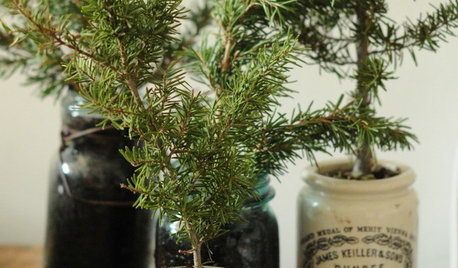

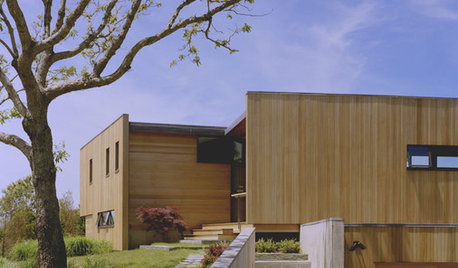
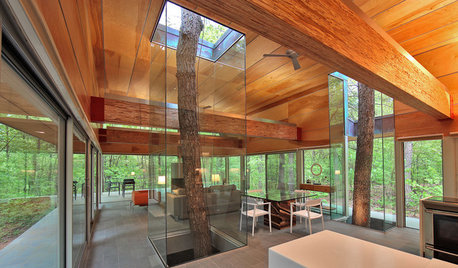

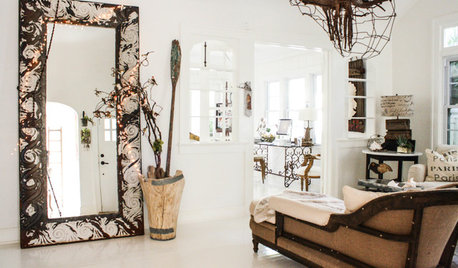
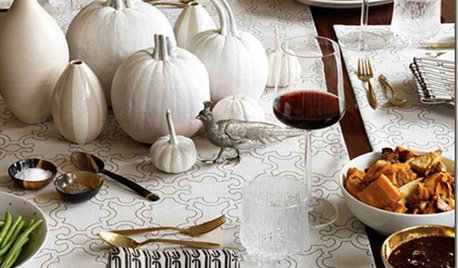
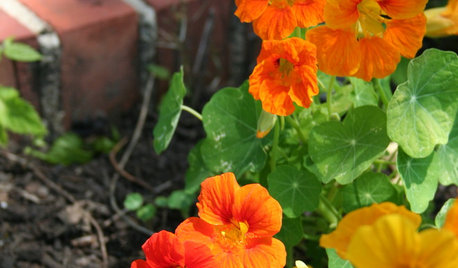
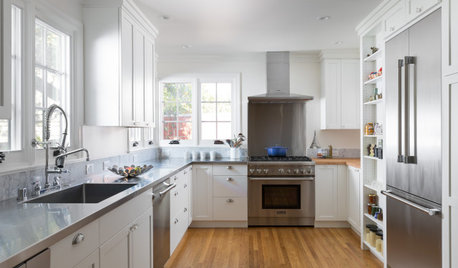




Okiedawn OK Zone 7